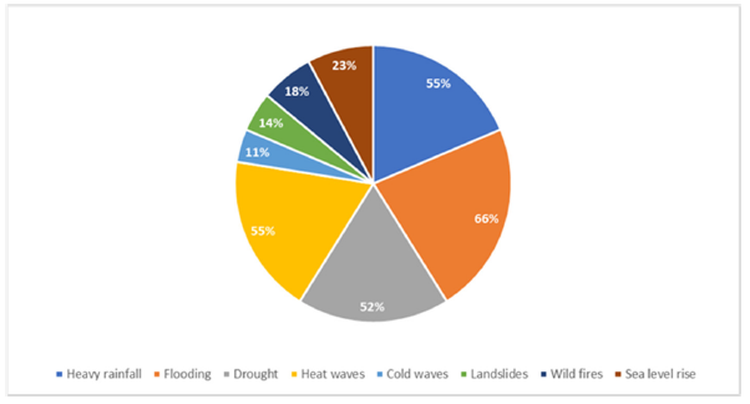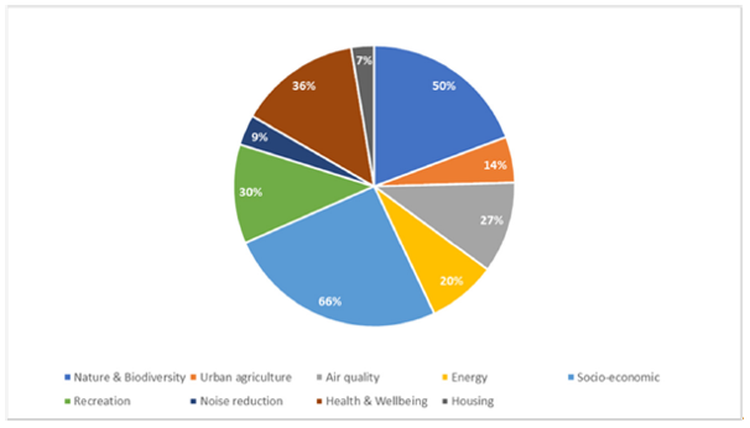Nature-based solutions (NBS) are increasingly recognized for their potential as an urban climate change adaptation measure and strategy, being multifunctional and solution-oriented by definition, as well as place-based, i.e., adaptable to the specific socio-ecological context at hand.
A large variety of tools has already been developed worldwide to support the mainstreaming and uptake of NBS in cities, ranging from methodologies, software, catalogues, repositories and e-platforms to guidelines and handbooks.
Such tools can, among others, inform and aid the planning processes by selecting and evaluating NBS, simulating NBS implementation, calculating the costs and benefits of NBS, supporting stakeholder involvement and facilitating collaborative processes.
“With nature-based solutions, inspired and supported by nature, we can build cities’ resilience. This is done in a cost-effective manner, while simultaneously providing environmental, social and economic benefits.”
Gerben Mol
Program Developer
“Solutions that are nature-based bring more diversity as well as natural features and processes into cities. One can think of developing landscapes and seascapes through locally adapted, resource-efficient, and systemic interventions.”
Monserrat Budding-Polo Ballinas | Researcher & Advisor for Climate Resilient Cities | Wageningen University & Research (WUR)

Act on NBS project
Still, while such NBS tools are recognized to facilitate and accelerate the process of climate adaptation, it is found that a comprehensive mapping of their availability and capacity to respond to cities’ challenges is missing.
Therefore, researchers at Wageningen University & Research (WUR), Deltares and University of Bologna, as part of the Adaptive Cities Through integrated Nature Based Solutions (ACT on NBS) project, assessed the different challenges that cities experience in urban NBS implementation. They conducted structured interviews and workshops with municipalities, and reviewed available tools that support NBS uptake in urban areas. Let’s hear what they found out.
“There is a need to better understand in what ways tools that intend to facilitate designing, planning, assessing and implementing NBS for climate adaptation in urban areas can help overcome the uptake of specific NBS challenges those cities are struggling with.”
Gerben Mol
Program Developer
“End-users can only benefit from these tools when they are aware of their existence, they can compare the diverse available tools. They can make an informed selection of the instruments suitable to address specific challenges in their cities and adapt them to their specific needs and local contexts.”
Monserrat Budding-Polo Ballinas | Researcher & Advisor for Climate Resilient Cities | Wageningen University & Research (WUR)

Four challenges that hamper Urban NBS uptake
To examine the ways in which NBS tools can be used to help overcome challenges for NBS uptake, the first step of the research was to compose an overview of relevant NBS tools. NBS tools were identified through: (i) interviews with EU municipalities and workshops on NBS tools, and (ii) additional desk research.
The second step was analysing the final sample of tools on their descriptive characteristics and potential fields of application. The use of pre-defined indicators was chosen to support the characterization of the tools and to allow for their comparison.
During the interviews, the researchers identified four key challenges that municipal officers experience with NBS implementation: the institutional setting; availability of (financial) resources; level of expertise, know-how or competence; and collaborative governance and planning.
“Existing regulatory and legal conditions and restrictions, designed for traditional grey infrastructure, can unnecessarily hamper NBS uptake and administrative procedures are deemed long and complex”
'The Nature of Cities' Workshop 2019, International participants
“A catalogue of applicable and customizable NBS could provide cities with more knowledge on measures in general, and specific knowledge on NBS for particular challenges.”
Utrecht, Warsaw, 2019 and Amsterdam, 2020 interviewees
What is required for effective application of NBS tools?
In sum, in most cases, end-users need insight in the tools available, an in-depth understanding of these tools or a training on how to apply the (selected) tools effectively in their NBS implementation processes.
Hence, it is not only important to develop and disseminate tools that can support NBS uptake, but it is also essential to provide potential end-users such as municipal officers with additional support in selecting and applying the right tools for the challenges they are facing.
Also, the language in which a tool is provided can be a barrier or an enabler to use certain NBS tools. If tools are in English, potentially a higher number of end-users can make use of the tools. However, in all cases that a tool is not provided in the native language, some officers are likely to face a language barrier.
“There is not just one intended user (group) nor one specific part of the NBS uptake process that should be supported by tools. Rather, there are different potential end-users—such as urban ecologists, planning departments of municipalities, local government officials, designers, and engineers to name a few.”
Monserrat Budding-Polo Ballinas | Researcher & Advisor for Climate Resilient Cities | Wageningen University & Research (WUR)

Review of tools that potentially support NBS uptake in cities
The researchers found many tools have been developed that aim to support NBS uptake in the urban environment. For this project, a total of 44 NBS tools** have been analyzed.
Although often cities have been involved in the development of the tools as potential end-users, many of these tools were developed as a technology push and not necessarily to fulfill the needs of the end-users.
Furthermore, what was particularly striking, is that the challenges indicated by the interviewees are found to be addressed less frequently: challenges with the institutional setting, availability of financial resources, and collaborative governance and planning. Still, all tools did address at least one of the challenges for NBS uptake that are experienced by cities.
The researchers discovered that most of these NBS tools, whether it’s a methodology or software, have a planning and design purpose. Software generally has a more analytical and less inspirational purpose than methodologies.
Overall, the majority of investigated tools aim to support planning and design (75%) and/or are informative in nature (70%). Almost all tools can support the research process and awareness creation in the exploration phase (95%) as well as in the preparation phase for NBS planning and design processes (93%).
All the tools aim to support NBS uptake for urban climate adaptation, but they differ in their specific scope. It was found that if the NBS tools focus on specific climate hazards rather than addressing urban climate adaptation more generally, they always focus on more than one hazard.
Moreover, tools have been designed primarily with an emphasis on flooding, heavy rainfall, heat waves, and droughts (Figure 1).

Figure 1. Climate hazards addressed by the tools (%)
Furthermore, all tools address several co-benefits, with most attention for socio-economic benefits (66% of the tools) and nature and biodiversity (50%) (Figure 2). In addition, most of the tools have potential to support overcoming a lack of expertise.

Figure 2. Co-benefits addressed by the tools
Recommendations by the researchers
Based on the developed catalogue of reviewed tools, the project team provides researchers and tool developers with insights into potential market saturation as well as the scarcity of certain types of tools that may be a potential niche for new tool development.
Also, the researchers indicate that developing tools in itself is not enough for the mainstreaming and uptake of NBS. Several of the reviewed tools have been developed as part of (EU) funded research projects that do not provide support and maintenance after the project has finished, which is often a requirement for tools to be used by end-users.
“It should be questioned whether developing a new tool is always the best option, or whether the modification of an existing tool would be more (cost) effective.”
Monserrat Budding-Polo Ballinas | Researcher & Advisor for Climate Resilient Cities | Wageningen University & Research (WUR)

Finally, it deserves further research to evaluate which tools’ characteristics are crucial for effectively providing end-users with the support they need, through, e.g., pilot projects or living labs that involve researchers, tool developers, and other end-users.
Not only would such processes offer potential to translate cities’ challenges into practical and widely applicable tools, without “reinventing the wheel”, but at the same time, such processes offer the opportunity to gain experience with NBS implementation.
“Such “learning by doing” with regard to these NBS tool is essential to overcome the barriers in the mainstreaming and uptake of NBS in urban areas.”
Gerben Mol
Program Developer
To read the full research article please click here.
Please note: **It should be stressed that the catalogue is not a complete overview of existing tools. Potentially valuable tools can be missing in the catalogue and certain types of tools can be underrepresented as a result of the adopted search and selection criteria.
This work received financial support in the frame of the Adaptive Cities Through integrated Nature Based Solutions (ACT on NBS) project, by EIT-Climate KIC. Wageningen Environmental Research has received co-funding from the Amsterdam Institute for Advanced Metropolitan Solutions (AMS) and from the Wageningen University Knowledge Base program: KB36 Biodiversity in a Nature Inclusive Society (project number KB36-005-005)-that is supported by finance from the Dutch Ministry of Agriculture, Nature and Food Quality.
Want to know more about this study?
Please send an e-mail to Monserrat Budding-Polo Ballinas, Researcher & Advisor for Climate Resilient Cities at WUR.

